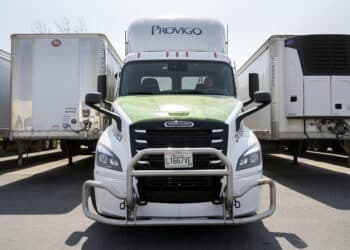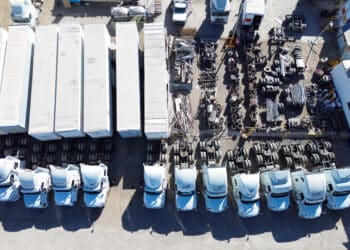Dealers, lenders, OEMs and buyers to benefit from 100% bonus depreciation
Overall spot truck posts down 22.4% YoY
Truck dealers, lenders, OEMs and buyers stand to benefit from the return and expansion of 100% bonus depreciation under the recently enacted One Big Beautiful Bill
Businesses can again claim 100% bonus depreciation on qualifying assets, such as heavy equipment and commercial trucks, placed in service after Jan 19. The legislation, signed by President Donald Trump on July 4, reverses the previously scheduled phase-out and lifts the rate to 100% from 40% for qualifying assets.
While the permanent increase in bonus depreciation opens the door for larger and more frequent truck purchases, the impact of the 2017 tax bill, signed during Trump’s first term, and the 2025 tax are different due to the environment during their implementation, Avery Vise, vice president of trucking at transportation research firm FTR, said during a July 10 FTR webinar.
“The 2017 tax bill and the 2025 tax bill are not created equal because the tax bill in 2017 was a new tax cut, and the real big dollar value of the one that just got enacted last week is keeping those from going away,” he said.
“This is more of preventing a downside than it is about creating an upside.” — Avery Vise, vice president of trucking FTR
In addition, under the 2025 tax bill, a new 100% bonus depreciation is available for qualified production property in the United States, including manufacturing assets, effective for property placed in service from 2025 through 2029. The new manufacturing bonus depreciation incentivizes immediate investment in machinery, equipment and manufacturing facilities for the next four years.
Other trucking issues remain
Although bonus depreciation may offer some support, it is unlikely to reverse current trends on its own due to tariffs and other pressures, Vise said. The reduction in truck orders is likely to continue despite the 60% increase in bonus depreciation in 2025.
“If anything, this reducing of orders, which presumably will continue at least through the fall or into the fall because of the nature of when orders come in and when they get built, is going to be some factor keeping trucking in check as we go forward,” he said. “Frankly, none of that’s going to matter unless we have more freight. That’s the bottom line is that we have to have more freight.”
Freight activity remains down year over year, with overall spot truck posts falling 22.4% YoY in June, according to Beaverton, Ore.-based software company DAT Freight & Analytics, which tracks freight and spot rates. Still, flatbed spot rates improved 1.6% YoY and van spot rates were up 0.5% YoY in June, indicating positivity for the larger carriers, Vise said.
“The larger carriers have more or less brought their capacity back in line with where the market is,” he said. “But we still have this big overhang of a large number of very small carriers operating, of course, mostly for brokers.”
Register here for the free Equipment Finance News webinar “Technologies to Advance Your Equipment Financing Business” set for Thursday, July 17, at 11 a.m. ET.









